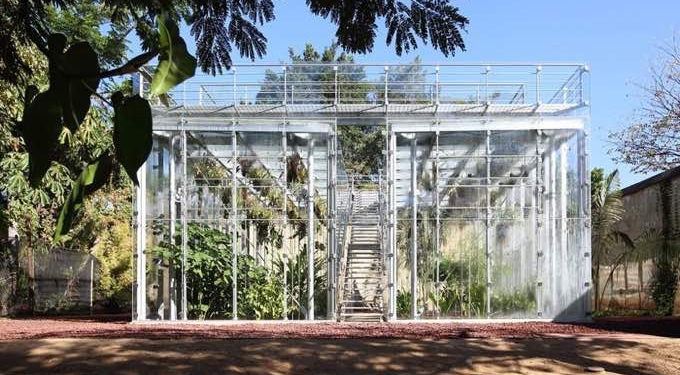Green engineering isn’t just good for people and the planet, it’s good for profits too.
According to Dodge Data and Analytics’ annual World Green Building Trends Report, not only are more businesses investing in green technologies for their new buildings or retrofits, they're seeing consistent savings and benefits to their bottom line as a result – with an average 5-year operating cost reduction of 14% and a ‘payback time’ of around 6 years. And with buyers increasingly favoring green buildings, developers are seeing higher point of sale values for their completed projects too.
So, what are they building? We take a look at a few award-winning green buildings and construction projects from the past year, as well as some notable and emerging green engineering technologies from around the globe.
2018 Best of Design Award for Green Building: Orchid Educational Pavilion, Oaxaca, Mexico

Much more than an impressive greenhouse, the innovative Orchid Educational Pavilion, designed by FGP Atelier architects, is an interactive and educational tool as well as an entirely self-sustaining ecosystem. The pavilion’s central staircase doubles as a rainfall collector, and an integrated geothermal and passive cooling system maintain the optimum conditions for the many species which the structure houses. The zero-energy orchid house is also modular, which means it can be dismantled and relocated easily, as well as causing as little damage to its surroundings as possible.
Cranfield University, the “Nano Membrane Toilet”

This 2018 IWA (International Water Association) Award winner, funded by the Bill & Melinda Gates Foundation’s ‘Reinvent the Toilet Challenge' uses nanotechnology to convert human waste to water and ash, with the aim of providing sanitation in areas where no existing plumbing exists. Self-contained, waterless and with an expected lifespan of ten years, the system produces clean water suitable for household use or irrigation without any additional chemicals necessary. A combustor converts residual solids into ash and energy to power the membrane process, with enough left over to potentially charge low-voltage electronics such as a mobile phone.
Green Flood Control Finds Support in Texas

With hurricane season now underway in the US, and two years since Hurricane Harvey wreaked $125 billion worth of damage in 2017, Texas is looking to implement a more balanced and sustainable approach to flood control than just ‘gray’ infrastructure like levees, drainage channels and pipes which tend to fail under extreme flooding conditions.
In May, Texas lawmakers passed Senate Bill 7 which cites: “construction and implementation of nonstructural projects, including projects that use nature-based features to protect, mitigate or reduce flood risk.” It is hoped that the inclusion of ‘pocket prairies’ and areas of natural vegetation and absorbent green spaces could make the Harris county landscape more resilient. Since the storm, thousands of residents have volunteered for buyouts, so the potential is there for a better mix of flood control systems and a chance to push for green designs.
Green retaining walls with geocells

Made from a non-degradable polymer called Neoloy, which is resistant to weathering, extreme temperatures and water, this retaining wall technology from PRS offers several environmental and sustainability advantages compared with traditional retention systems and solutions like poured concrete and gabion walls. Because the outer fascia can be filled with topsoil and planted with vegetation, and with cell wall perforations allowing for better onsite drainage and stormwater management, a more sustainable – and visually pleasing – outcome can be attained cheaply and quickly.
University of the West of Scotland, UWS Lanarkshire – The UK’s greenest university campus

Carbon neutral and powered by 100% renewable energy, UWS’ new Lanarkshire campus has raised the green engineering bar for learning institutions. Aside from sourcing its energy from solar panels and from the nearby Blantyre Muir wind farm, the campus also boasts a rainwater harvesting system which filters and pumps water throughout the campus. Its innovative ventilation system actually monitors CO2 concentration and varies airflow accordingly, saving electricity in the process. LED lighting adapts automatically to occupancy and natural light availability, and the campus canteens even use compostable cutlery!
Introducing ‘blue-green’ infrastructure

While humanity has been reclaiming land from the sea for hundreds of years, climate change, rising sea levels, more unpredictable weather and fiercer storms have made coastal development more challenging than ever before. Enter blue-green infrastructure – physical urban planning that prioritizes water management (blue) and natural vegetated spaces like parks (green). Landscaping and engineering meet in structures and facilities like strategic green roofs, parks and rain gardens to mitigate water flow issues.
















